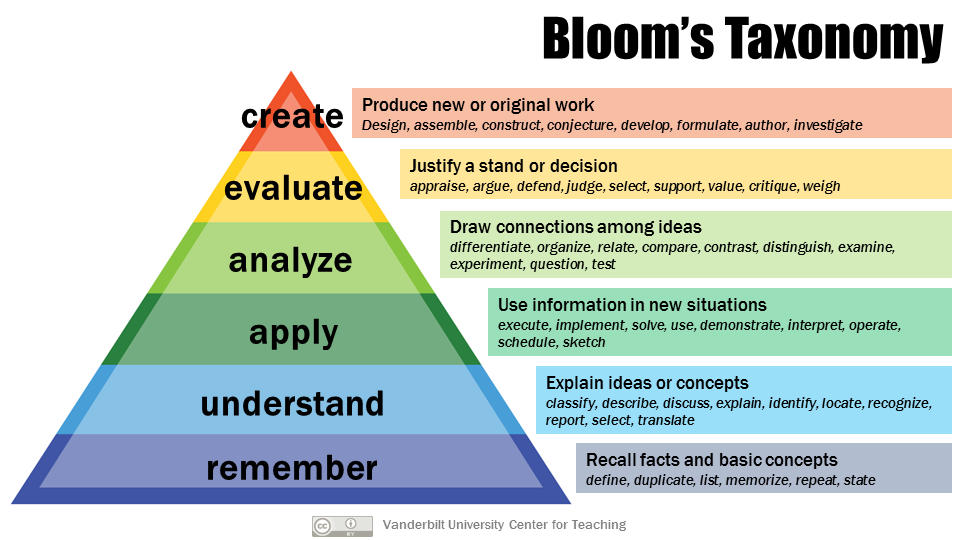The Problem
Post-modernity has demanded constant evolution from knowledge workers, so merely completing formal courses is no longer a guarantee of long-term employability. The ability to self-study and gain depth in new knowledge is one of the most powerful tools for those seeking to advance their careers, as it enables the expansion of knowledge and productivity independently of investments in traditional courses.
While I was working on creating my Individual Development Plan (IDP), I came across the following question:
What would be the appropriate way to categorize each of the technical knowledge areas I am seeking to develop? Is there any standardized way to categorize the depth of absorption of each knowledge area?
The Alternative
In my research to answer this question, I discovered Bloom’s Taxonomy, which is a methodology that classifies the degree of knowledge absorption, ranging from the ability to recall basic facts to the creation of new knowledge based on what has been learned.
Bloom’s Taxonomy consists of six levels, as shown in the image below.

In general, Bloom classified knowledge by degrees of assimilation, with a strong focus on evaluating the depth of absorption of content taught in educational institutions.
Levels of Assimilation
According to Shabatura (2022), below are the levels of Bloom’s Taxonomy and a brief summary of each level.
| Level | Description | Example Action Verbs |
|---|---|---|
| Remember | Recall facts and basic concepts. | define, duplicate, list, memorize, recall, repeat, state |
| Understand | Explain ideas or concepts. | classify, describe, discuss, explain, identify, locate, recognize |
| Apply | Use information in new situations. | execute, implement, solve, use, demonstrate, interpret, operate |
| Analyze | Draw connections among ideas. | differentiate, organize, relate, compare, contrast, distinguish |
| Evaluate | Justify a decision or course of action. | appraise, argue, defend, judge, select, support, value, critique |
| Create | Produce new or original work. | design, assemble, construct, conjecture, develop, formulate |
Conclusion
Classifying the depth of knowledge absorption is an important tool to allow for the prioritization of the knowledge areas to be improved in the IDP, focusing on individual gaps. It is also important to consider that when prioritizing the skills and knowledge to develop, one should take into account market demands and those of the current employer, in order to create a prioritization that makes sense in the short and medium term.
References
Armstrong, P. (2010). Bloom’s Taxonomy. Vanderbilt University Center for Teaching. Retrieved 04/09/2024 from https://cft.vanderbilt.edu/guides-sub-pages/blooms-taxonomy/.